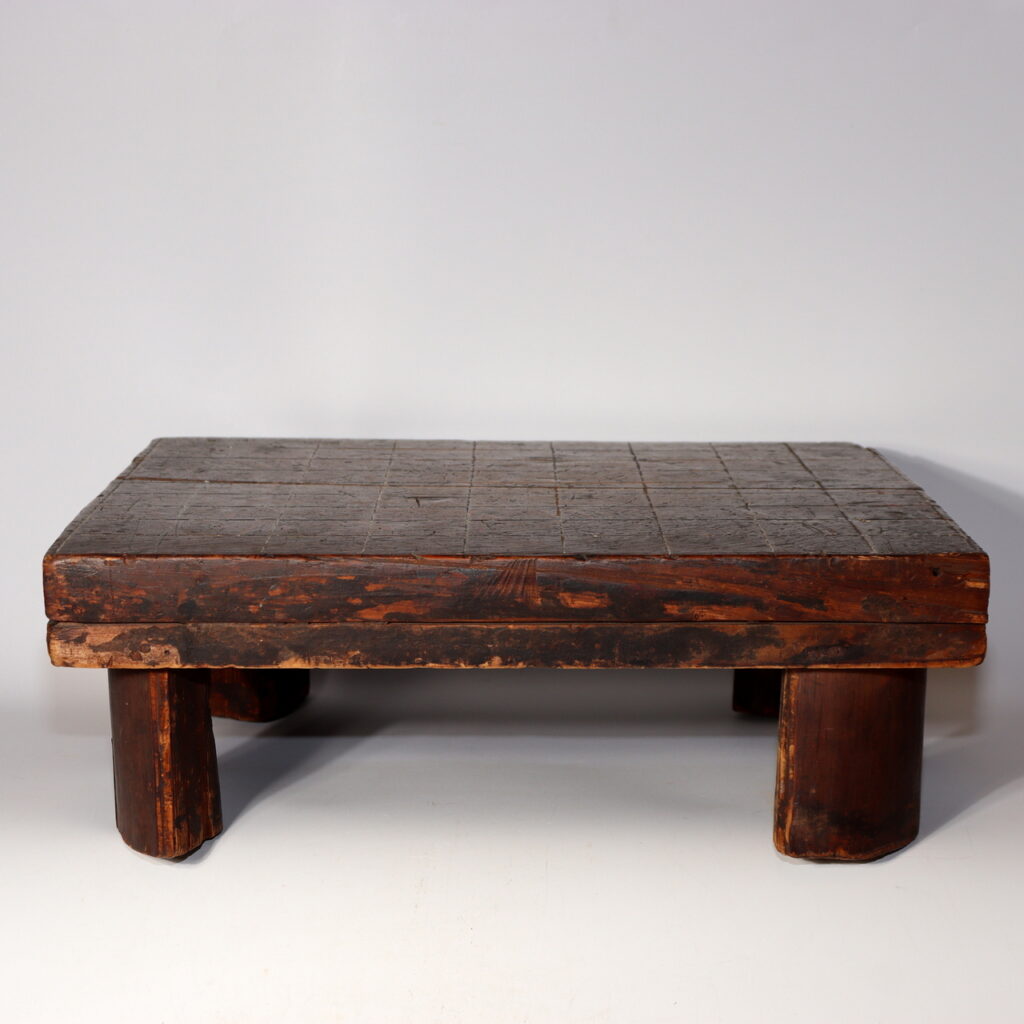
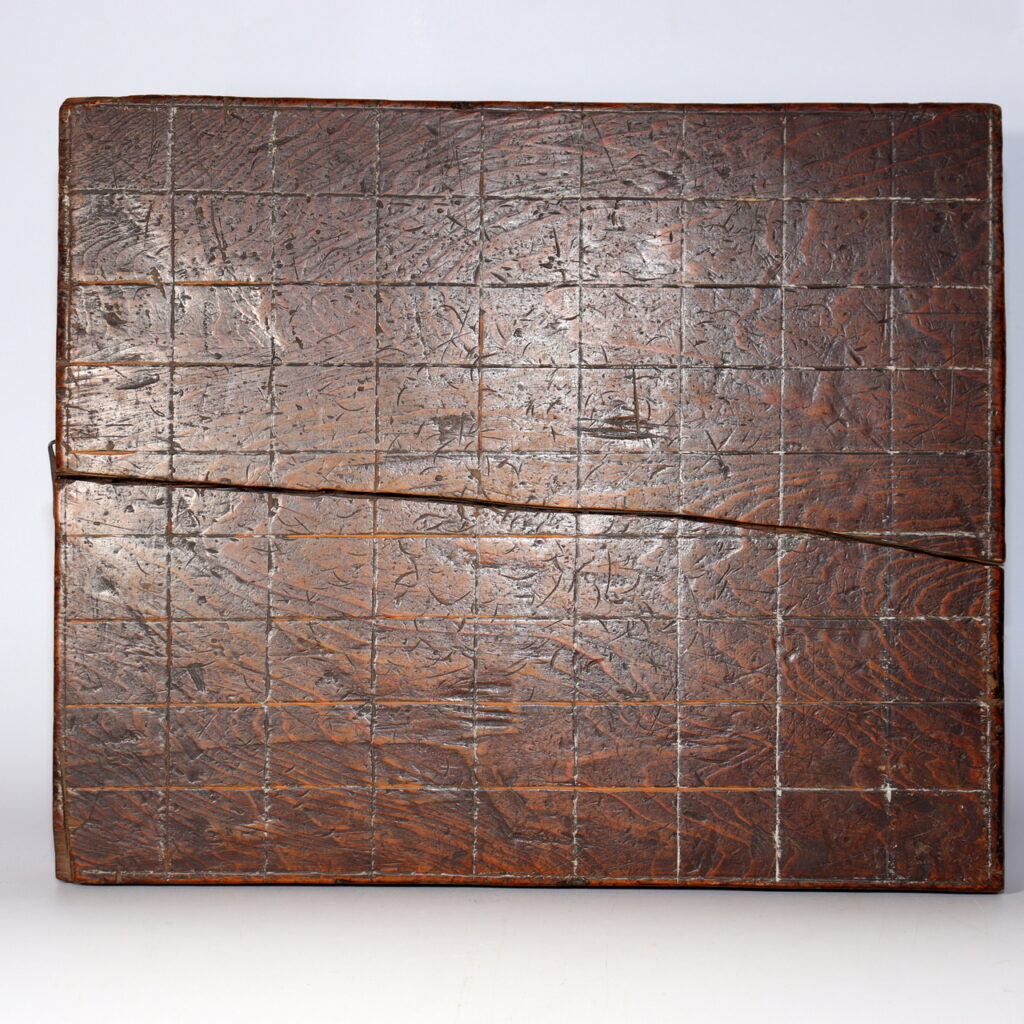
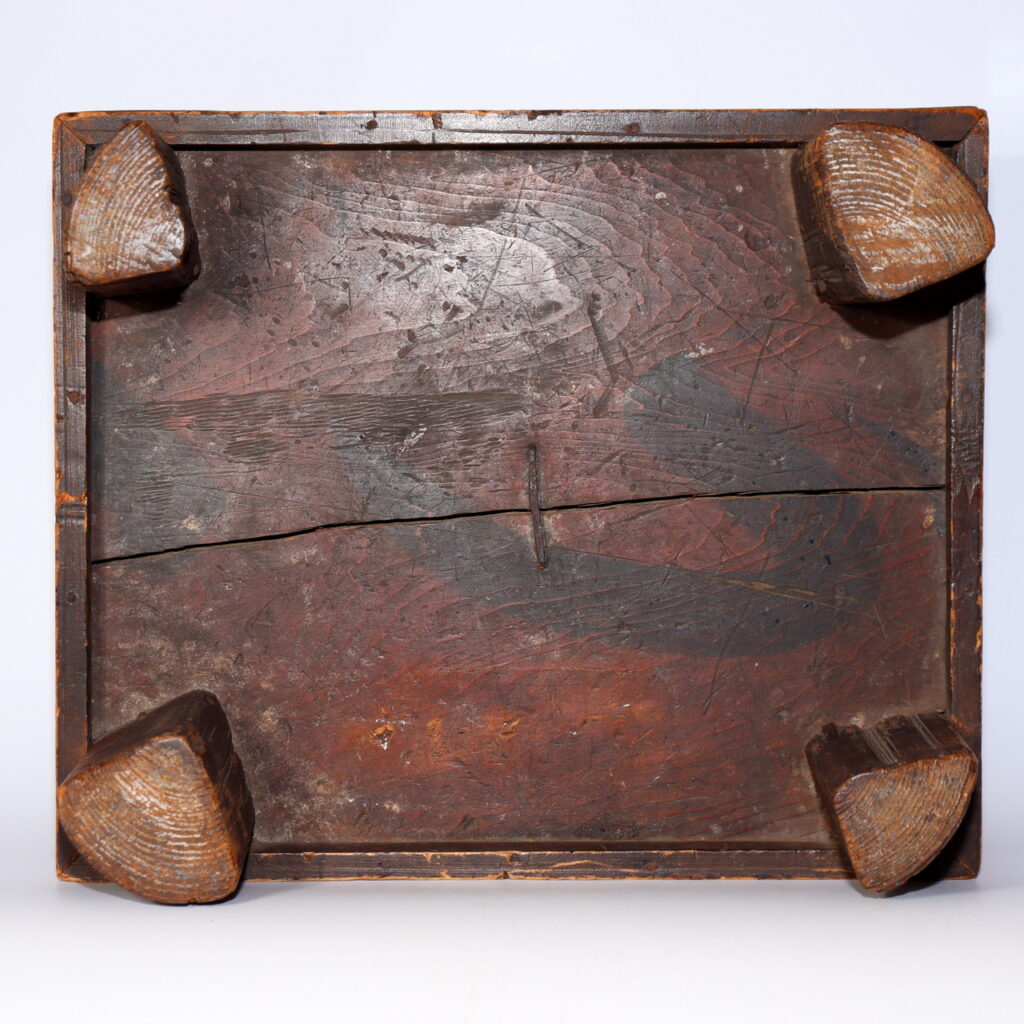
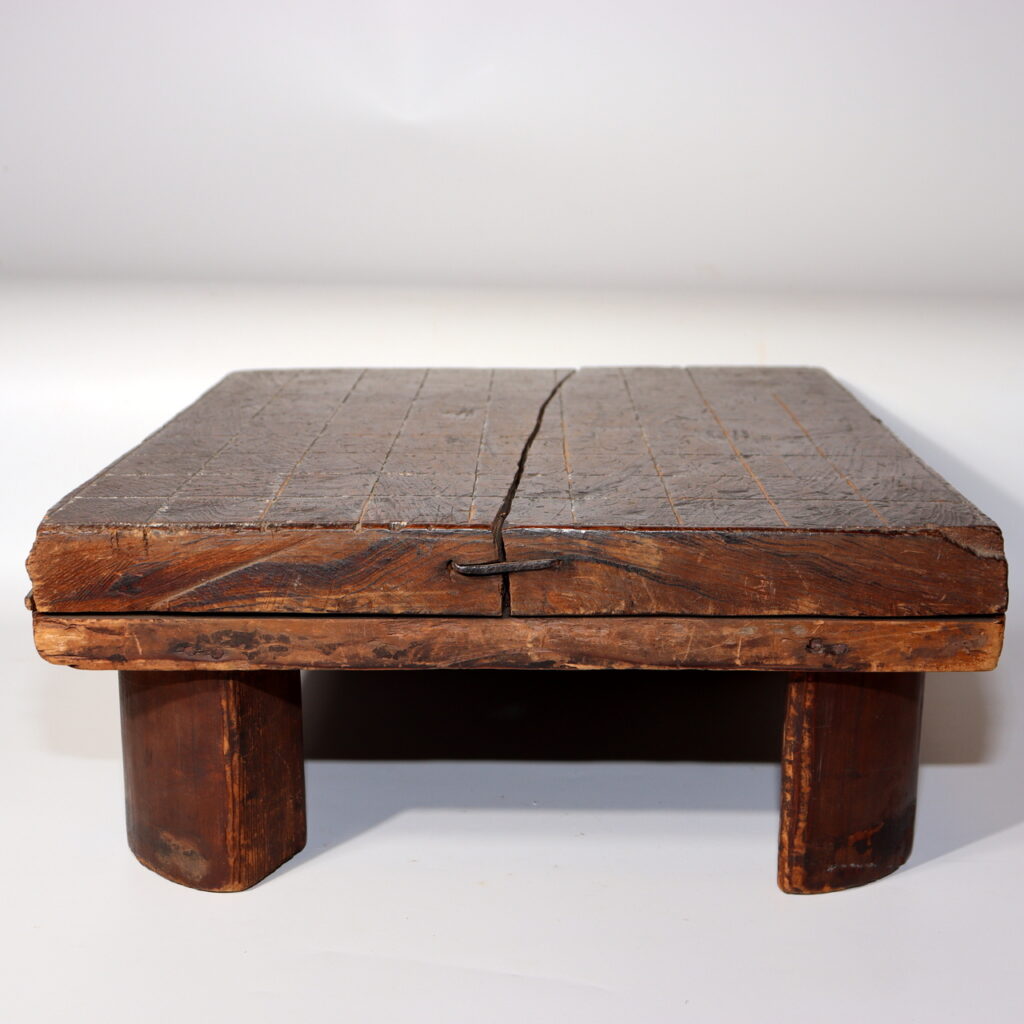
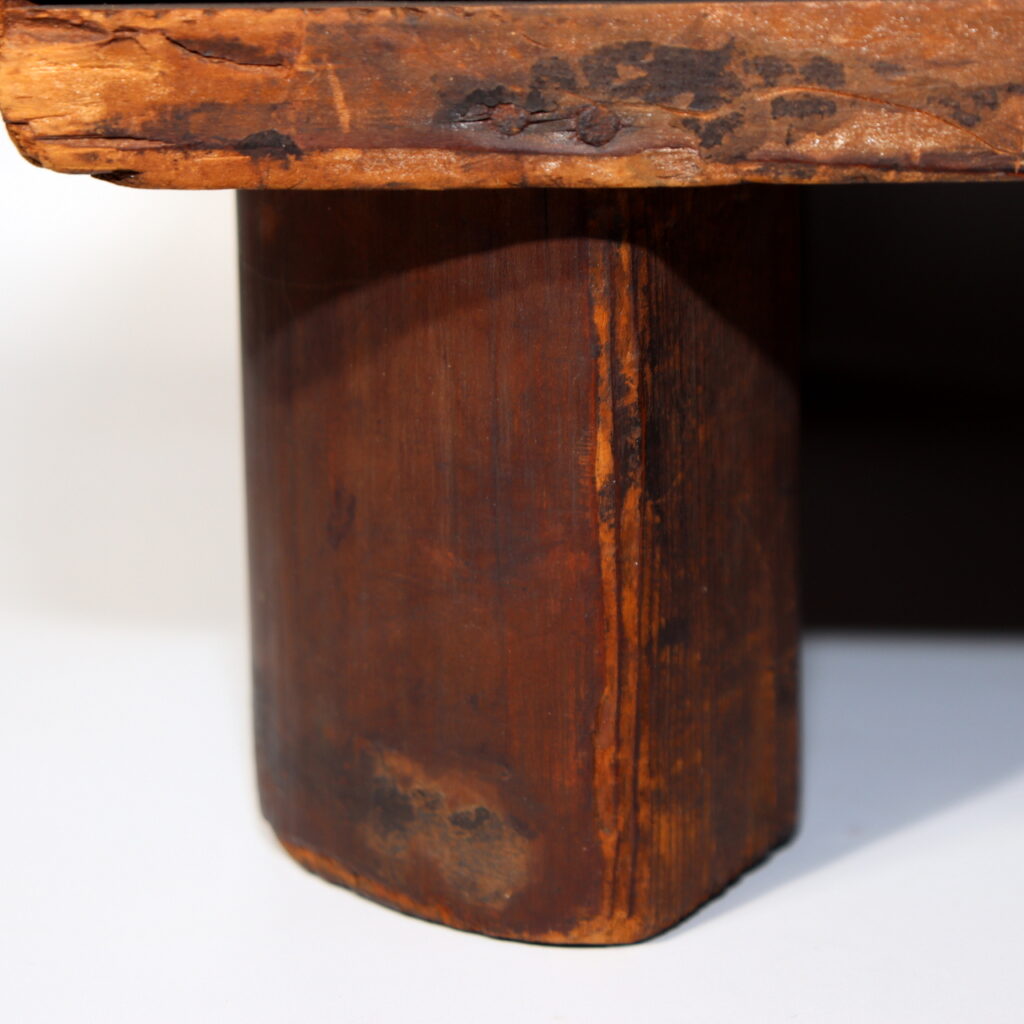

At first glance, this may appear to be a simple wooden table. But look closer, and you’ll find a Japanese antique Shogi or Go game board steeped in history, handcraft, and quiet resilience. With its visible kasugai naoshi repair—an ancient Japanese technique using metal staples—this piece exemplifies the enduring beauty of imperfection and the legacy of communal tradition.
The Story Behind This Piece
This antique wooden game board table was originally used for playing shogi (Japanese chess) or go, two of Japan’s most beloved strategic board games. Likely crafted between the late Meiji and early Showa periods, the table would have served as the focal point for hours of thoughtful play—whether in a family parlor or local game house.
The board’s grid lines are still visible on its deeply aged surface. A large crack—expertly repaired using the kasugai naoshi method—reminds us that in Japanese philosophy, restoration is not about hiding damage, but honoring it. Much like kintsugi, kasugai emphasizes that age and mending add character, not flaw.
What Makes This Piece So Compelling
- Aged Beauty and Patina: Crafted from solid hardwood, the board bears a rich patina and natural wear that narrate its past life.
- Kasugai Naoshi Repair: The table features a traditional staple-repair technique—metal clamps that mend cracks while remaining proudly visible. This technique is rarely seen outside of Japan and lends tremendous cultural and visual depth.
- Functional Versatility: While it once served as a game board, the piece now functions beautifully as a rustic coffee table, entry bench, or display stand—ideal for homes embracing wabi-sabi or vintage industrial aesthetics.
- Sturdy Structure: The board’s thick slab top and robust legs speak to a construction made to last—built not only for games but for generations.
- Conversation Piece: Whether placed in a traditional Japanese room or a minimalist Western space, this table invites dialogue around craft, history, and repair.
Why It Appeals to Collectors and Designers
For collectors of Japanese antiques, particularly those focused on Meiji-era objects, folk repair methods, or game history, this table offers a rare combination of cultural function and aesthetic form.
It’s also highly attractive to:
- Interior designers favoring wabi-sabi elements
- Decorators seeking low-profile coffee tables with historical presence
- Go or shogi enthusiasts who appreciate the intersection of play and artistry
- Curators of functional antiques and Japanese joinery techniques
In a modern world of disposability, this repaired board reminds us of the beauty of preservation over perfection.
Conclusion: A Table That Carries More Than Just Games
This antique Japanese Shogi / Go table is more than furniture—it’s a story told in wood and iron. With every grain line and repair mark, it offers an invitation to reflect, to restore, and to appreciate the quiet dignity of things well used and well loved.
If the item has already sold, please explore our broader collection of wabi-sabi antiques, Japanese game boards, and functional folk art:
🔗 Browse our full collection